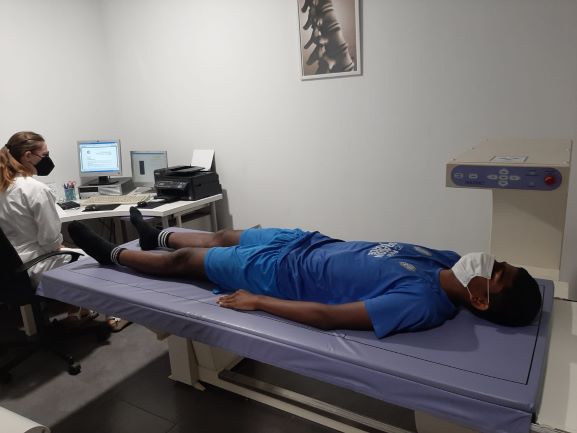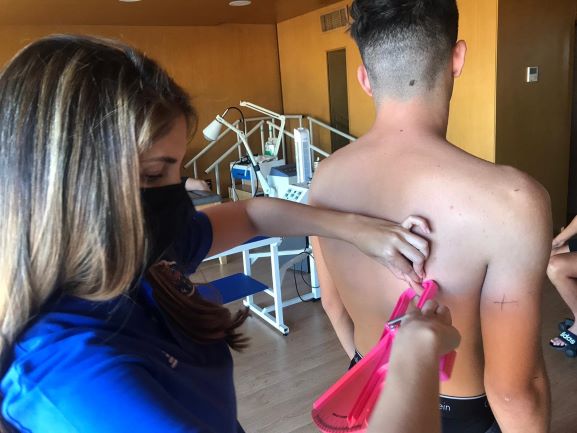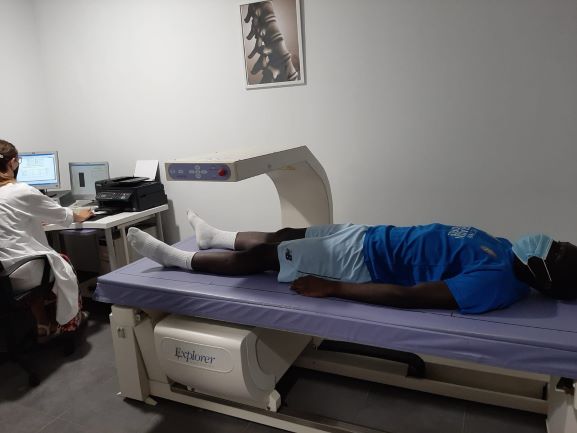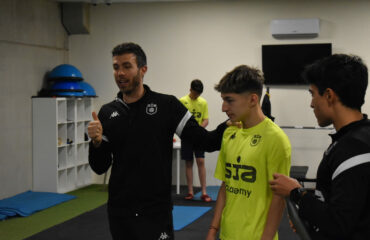THE BEST MEDICAL EXAMINATIONS IN PROFESSIONAL FOOTBALL
The young players of the Soccer Inter-Action International Football Academy in Spain undergo the best medical tests to be analysed in depth in order to help them reach their full potential. The annual High Performance Programme of the Soccer Inter-Action International Football Academy in Spain progresses relentlessly.
The international and national football players registered for the programme – registration is still open – are already at the SIA High Performance Centre – located in Enguera (Valencia, Spain) and have been in the hands of Soccer Inter-Action professionals from the very beginning.
In this way, the young players are now fully involved in the first phase of SIA’s Annual High Performance Programme, where the coaches and other Soccer Inter-Action professionals prioritise the study and analysis of the characteristics of the players, both in the way they perform on the pitch and beyond it.

Therefore, one of the most important aspects of this phase is the medical tests. The young international and national football players enrolled in a High Performance programme need to know all the details of their physical condition. For this reason, the players undergo various tests, and Soccer Inter-Action is one of the International Football Academies in Spain that is most committed to the professionalism of these tests.
In fact, after the gas stress tests -also called cardiac ergometry- carried out on the young players, the footballers travelled -in turns and following the health protocols established by the Clinic- to the city of Valencia to undergo a DEXA test to find out the body composition of each player.

What is a DEXA test?
A DEXA (Dual Energy X-ray Absorptiometry) examination is one of the most sophisticated tests available in the field of bone densitometry. Every year, professional clubs such as FC Barcelona make a commitment to analyse the players in their first team, the reserve team and the Juvenil División de Honor through DEXA.
This test allows the athlete’s body composition and body fat index to be analysed in detail. Segmented into legs, trunk and arms, the DEXA report obtains the results of the percentage and kilos of bone mineral content, total and visceral body fat, basal metabolic rate, BMI, lean mass, dysmetries -if any- in the limbs and waist and hip ratio. In other words, it helps us to calculate the difference between mass and weight and to calculate body fat.

All these results are important for analysing the player’s physical condition and body composition, making it a key and very useful tool, especially for nutritionists. These professionals will use this report developed by DEXA to objectively assess the quality of the training and nutrition programme given to the athlete.
To know if it is working or not or if they need a special programme to improve any detail that in the medium term will enhance their performance, speed, agility, recovery, strength and endurance, as the Soccer Inter-Action nutritionist argues, in order to fight for effective weight loss and thus reduce fat mass, an exhaustive monitoring is necessary, full of maximum attention to how it will affect their performance.
Along with the nutritionist from Soccer Inter-Action’s International Football Academy in Spain, the results of the DEXA were given by the professionals who performed the test in Valencia, endocrinologists from Clinica Jaime I de Catarroja, who came to the SIA High Performance Centre – located in Enguera (Valencia, Spain) to answer any questions that may arise for the players in Soccer Inter-Action’s Annual Programme.

Anthropometric assessments for athletes
In addition to the DEXA examination and the stress test (ergonometry with gases), which were preceded by a traditional medical examination when each player entered the Soccer Inter-Action High Performance Centre, the nutritionist also wanted to go further in the anthropometric study of the player, which is why throughout the week the footballers went to the SIA Clinic to undergo an initial anthropometric assessment on an individual basis.
This evaluation is the perfect complement to the DEXA examination because in a more traditional way the athlete’s body measurements are obtained, placing even more emphasis on the analysis of possible structural or functional asymmetries of the young player.






